One Morning in Laos
The sun rose as the rain fell. I could hear the heavy drops as they danced across the hotel roof and onto the wooden verandah. Everywhere else lay hushed. The street outside the room was empty, and beyond it the Mekong rushed by.
At least, I think it was the Mekong. Luang Prabang lies on a sliver of land running between the meeting of the Mekong and Nam Khan rivers. A walk along the street outside our hotel, around the bend, and one river became the other. Both large, both brown, both soon to be in flood, but the Mekong by was far the larger. I never even learnt the name of our street. Everywhere I travel, I steep myself in the history the place, and learn all I can about everything I see; but Luang Prabang cast its spell even as I arrived by plane.
The mighty Mekong © A. Harrison
Flying across Australia is vast, and mostly brown, unless traveling along the coast with its endless sandy beaches and a sea stretching to the horizon. The contrast to the tiny mountain kingdom of Laos could not be greater. Green mountains rose to the sky. Their impossibly steep sides lay covered with verdant jungle, with valleys hidden by mist. Small patches of cultivation bravely defy the encroaching forest. Rivers and lakes twinkle in the distance.
Luang Prabang airport is new and sparkling and deserted, the buildings resplendent in traditional Lao style. The multi-tiered roofs stretch almost to the ground, while the so faa, or roof finials, point to the sky. These are often in the shape of a naga, or serpent. Even from the plane the gold decorations are blinding, and the heat and humidity engulfed me before my feet touched the tarmac. Yet unlike many a tropical city, the air smelt sweet, and clean.
Within a few hundred meters, however, the new airport road came to an abrupt end, and our car had to detour across a dirt patch and onto the old road into town. With Luang Prabang closed to the outside world until the 1990s, the short drive from the airport covered the decades (if not centuries) back to an era of romantic travel rarely found in this modern age.
What a way to pass the morning © A. Harrison
Farms and houses dotted the wayside, along with fields of rice and vegetables. Palm trees swayed in the breeze. Water buffalo stood content in the sun, happily munching at the lush vegetation, totally oblivious to the naked children on their back vainly kicking the beasts to make them move.
In 1353 Fa Ngum, an exiled Lao prince, returned from the Khmer capitol of Angkor to establish his kingdom at Luang Prabang — Lan Xang Hom Khao, The Kingdom of a Million Elephants and the White Parasol. (I love that touch of the one white parasol.) Today, Luang Prabang is a place of cobbled streets and quiet cafes overlooking the Mekong. It oozes (somewhat faded) French colonial charm, providing a counterpoint to the old wooden buildings and the innumerable wats, or temples.
Although being a Communist state, Luang Prabang is full of temples, and remains the religious and cultural capital of Laos. Many come to study at the university, and in the popular soap operas, the doctor or intellectual always speaks with a Luang Prabang accent.
Despite the influx of tourists trying to rush Laos into the 21st century, life here still continues at a walking pace. There are no traffic lights, only a few motorcycles and even fewer cars — after the chaos of Saigon, it proved an oasis of quiet, with not a horn to be heard. Outside the hotel fairy lights hung in the trees, slowly coming to life as the afternoon light faded. Then, without warning, the rain tumbled from the sky. From the safety of the verandah I watched as fat drops danced across the garden onto the road. Squeals of laughter filled the air as everyone dashed for cover. In a matter of minutes the streets of Luang Prabang were deserted. Once the tropical rains begin, few venture outside.
Next morning, as the first light of dawn fell on the day, the faint sound of drums filled the air. They came from every wat, signalling the start of Tak Bat, or the giving of alms. Despite the early rain, the monks walked through the town in a vibrant line of orange and saffron, silently collecting offerings of sticky rice. Every dawn they walk a set route from their various wats, (and with each wat having its own route, an endless procession of monks weaves silently through the streets).
It was already 32º C — and humid. Locals wait silently on the side of the road, giving offerings of sticky rice to the monks as they pass. Many have been up from before dawn, cooking their offering over an outdoor fire of coals. By giving rice (or ‘making merit’), Buddhists believe they will not go hungry in their next life.
At the far end of town I stood by myself in the rain. The monks passed in slow procession, accepting the offerings of the locals in gracious silence. Each morning I saw a gorgeous elderly man cook his offering, then sit in silence as he gave his offering. He always gave a little extra to the younger monks, who seemed little more than seven or eight years old. (By spending even a few years in a monastery, these children receive an education which many parents could not otherwise afford.)
After the monks had passed, I walked to the end of our street and so to the convergence of the Mekong and Nam Khan rivers. A steep set of stairs led down to the water where a long boat with four monks headed across the river to their wat hiding in the jungle. With the wet season just beginning, the waters still ran low. Impossibly steep stairs lead down the banks, indicating just how quickly the rivers rise once the rains start to flow in earnest. Last season a few bridges had washed away, yet to be replaced, and the town itself has on occasion been flooded.
I could just make out the golden tops of the temple peeping through the forest on the other bank. The image of the monks disappearing into the mists of dawn, as the drums called across the water, epitomised the magic of Luang Prabang.
Tak BAt © A. Harrison
Enjoy my writing? Please subscribe here to follow my blog. Or perhaps you’d like to buy me a coffee? (Or a pony?)
If you like my photos please click either here or on the link in my header to buy (or simply browse) my photos. Or else, please click here to buy either my poetry or novel ebooks. I even have a YouTube channel. Thank you!
Some of my other writings you may enjoy:

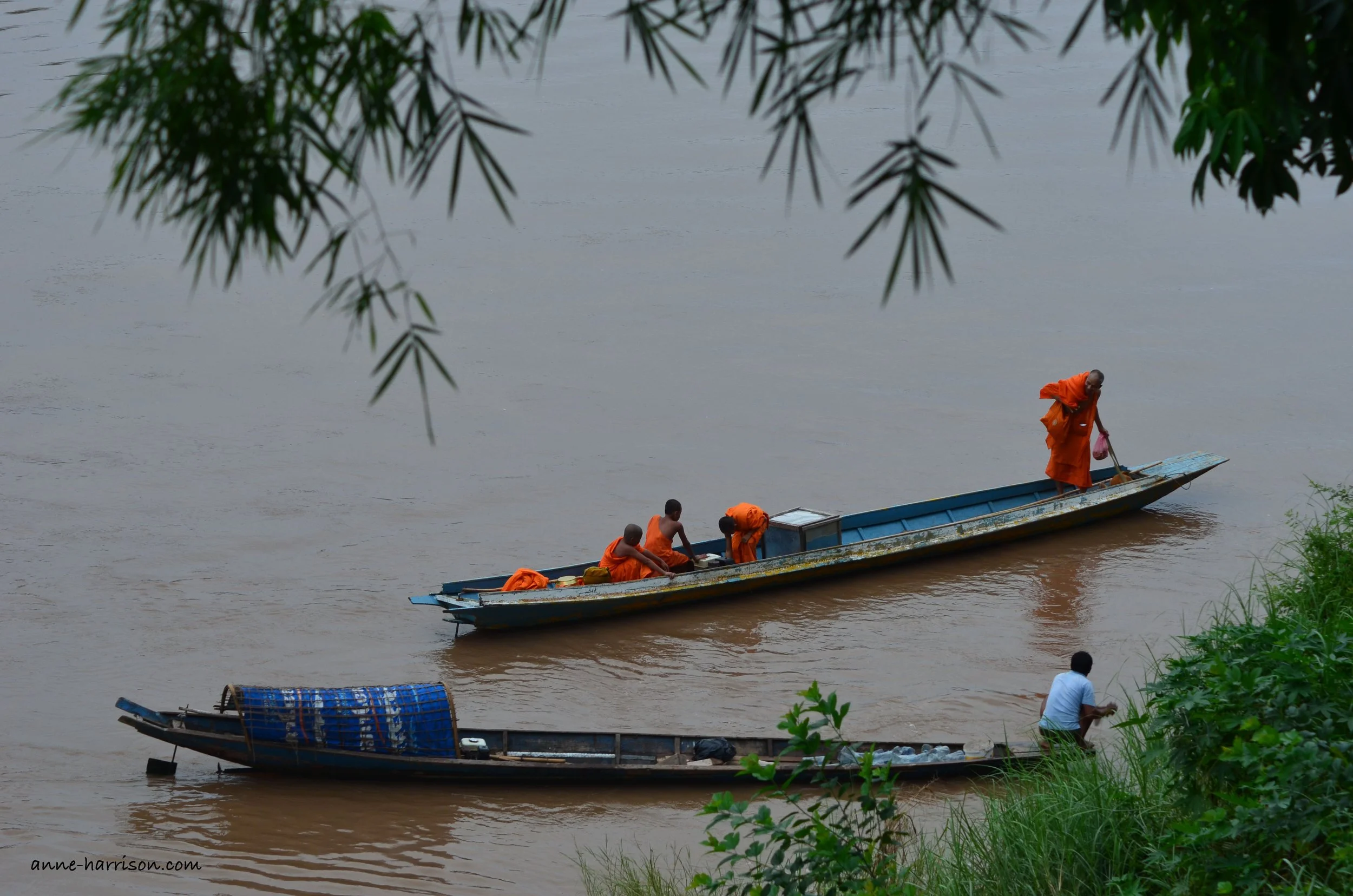
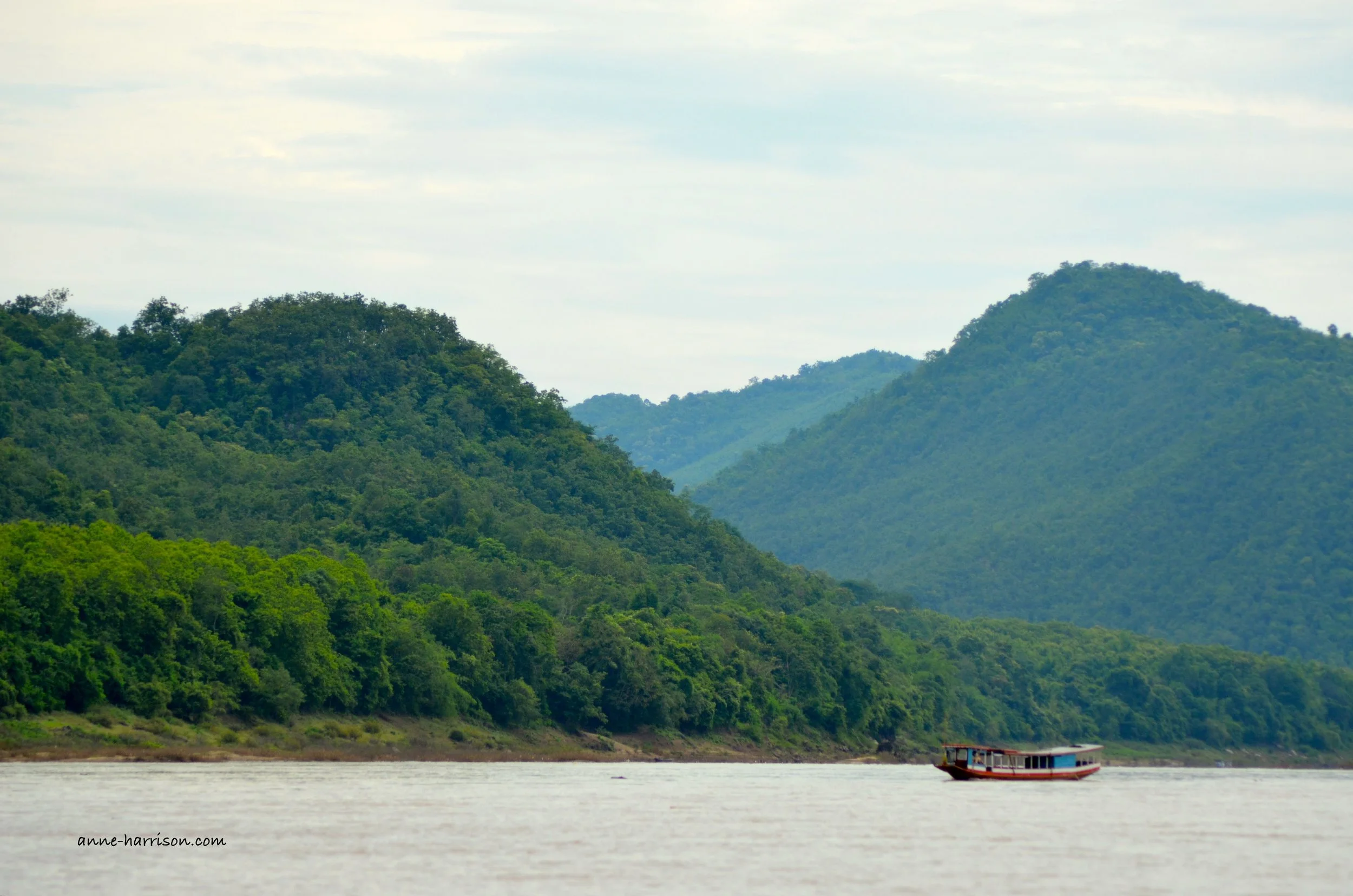
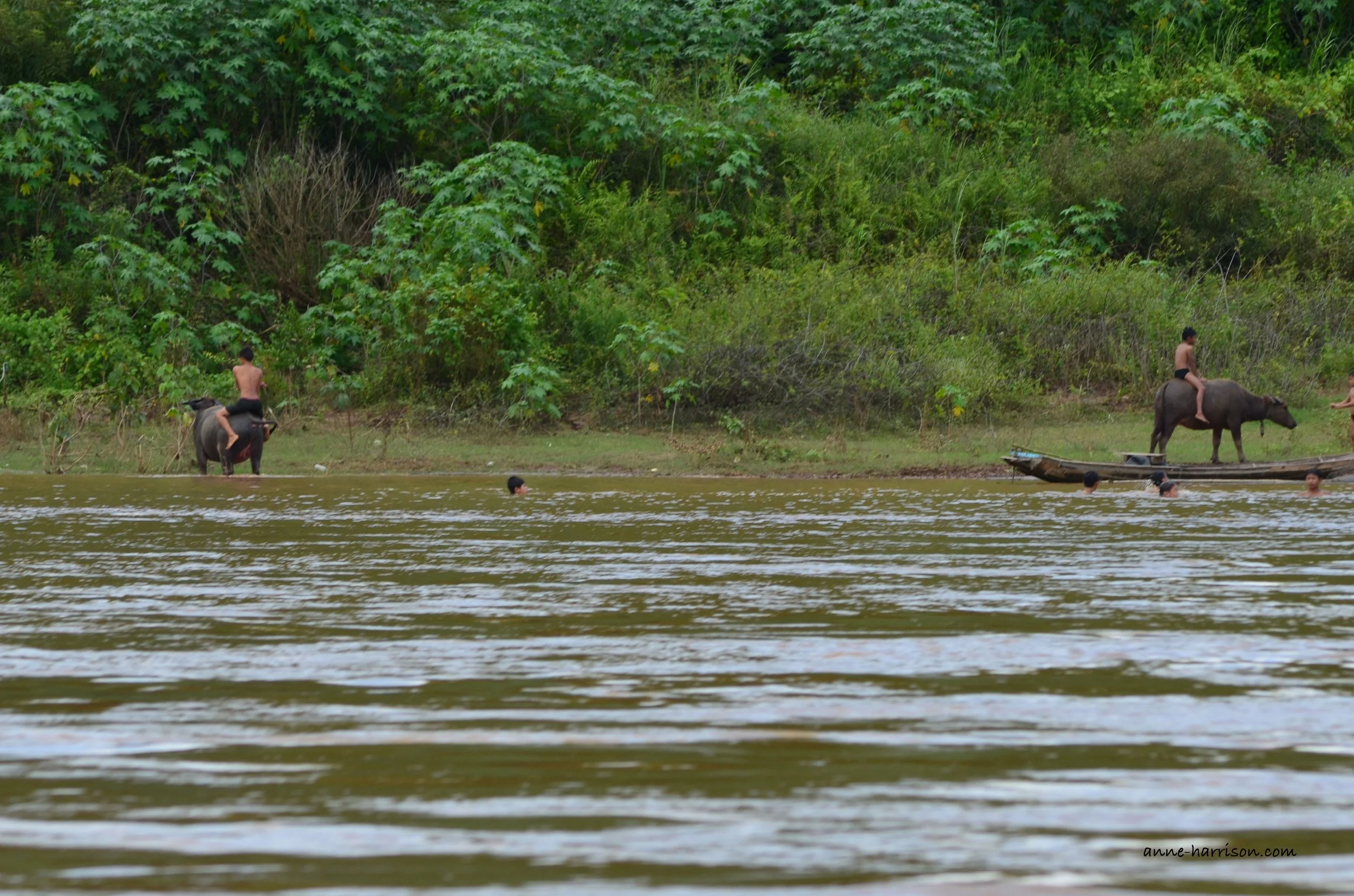




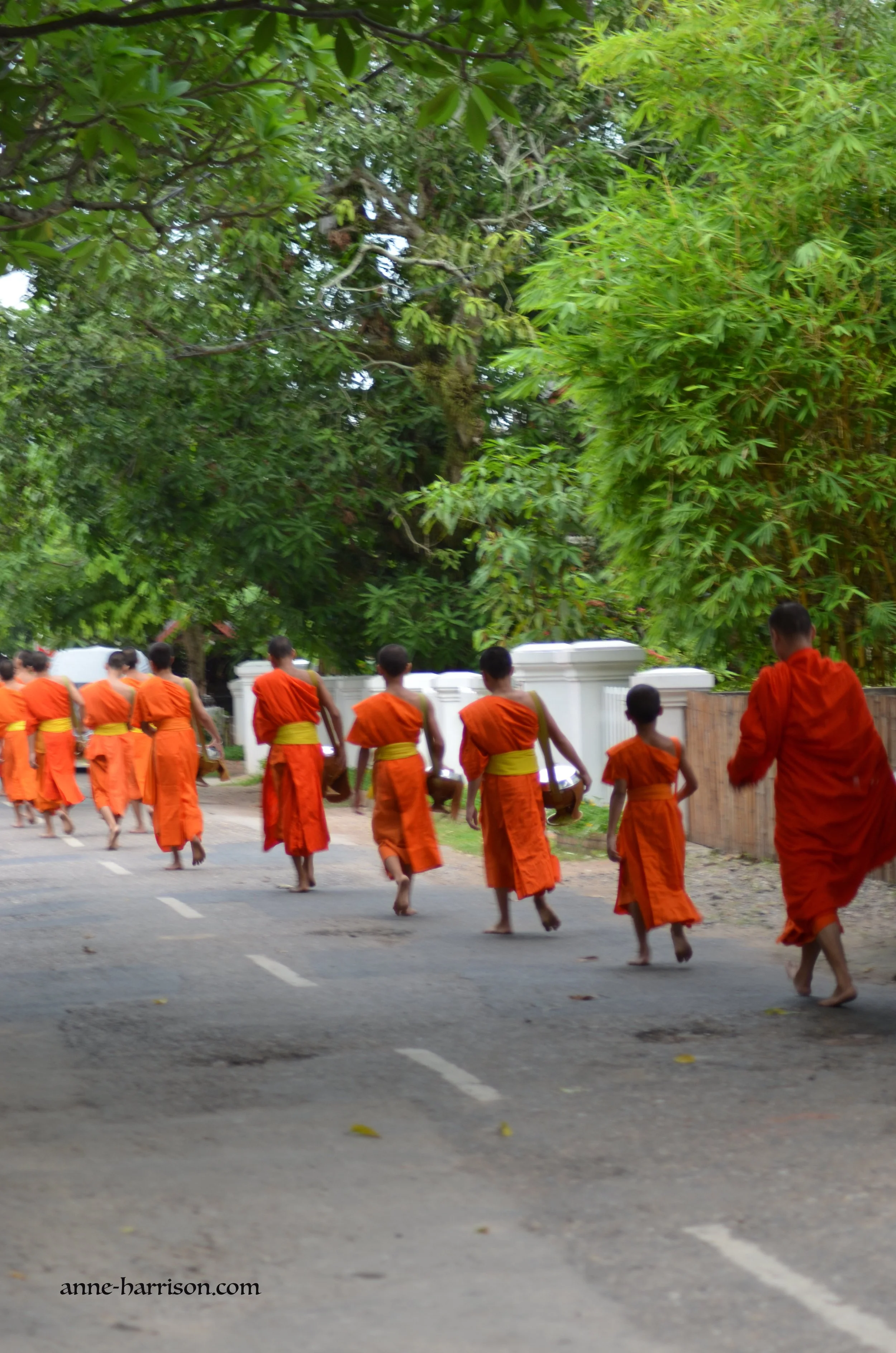
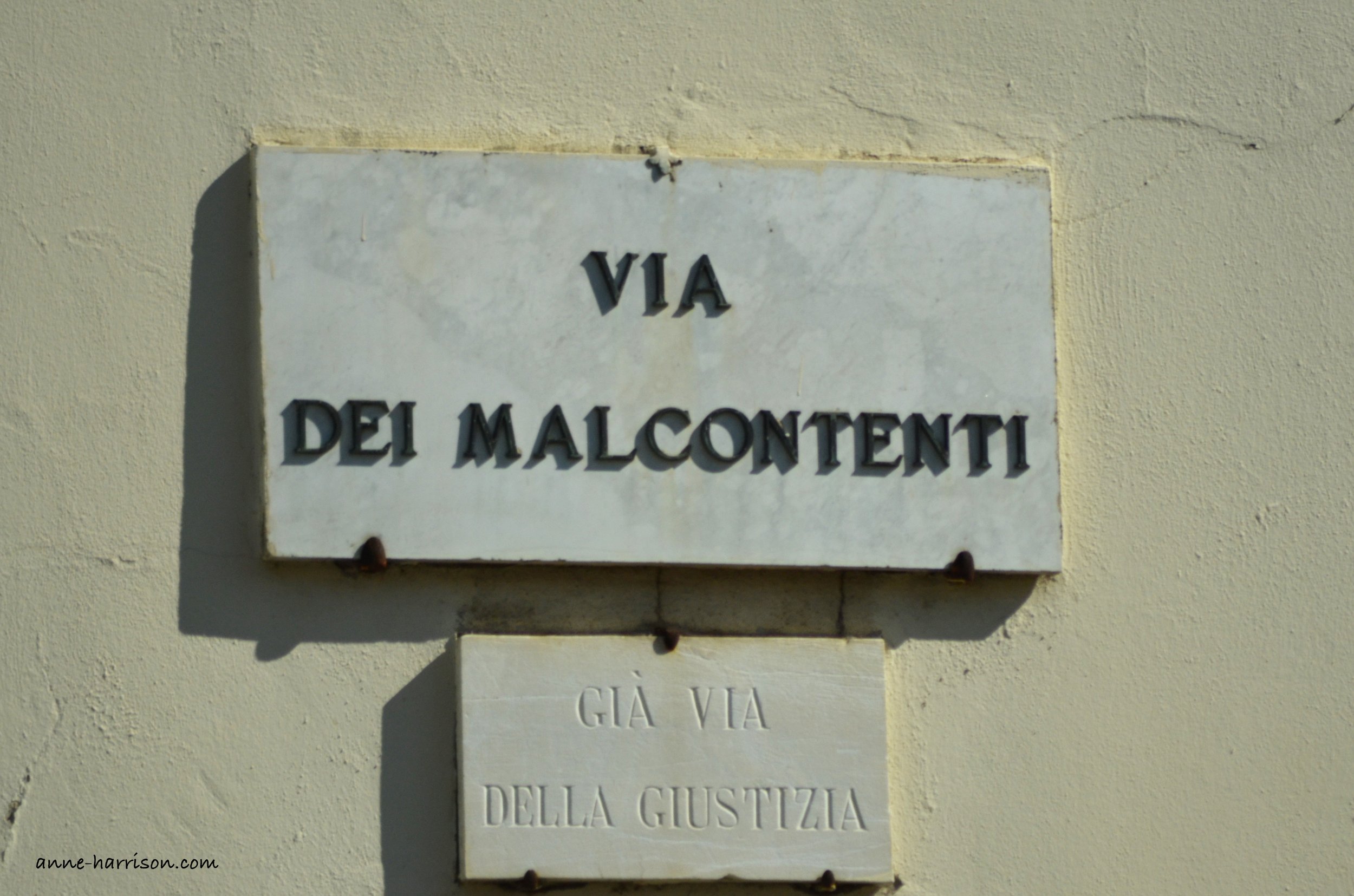

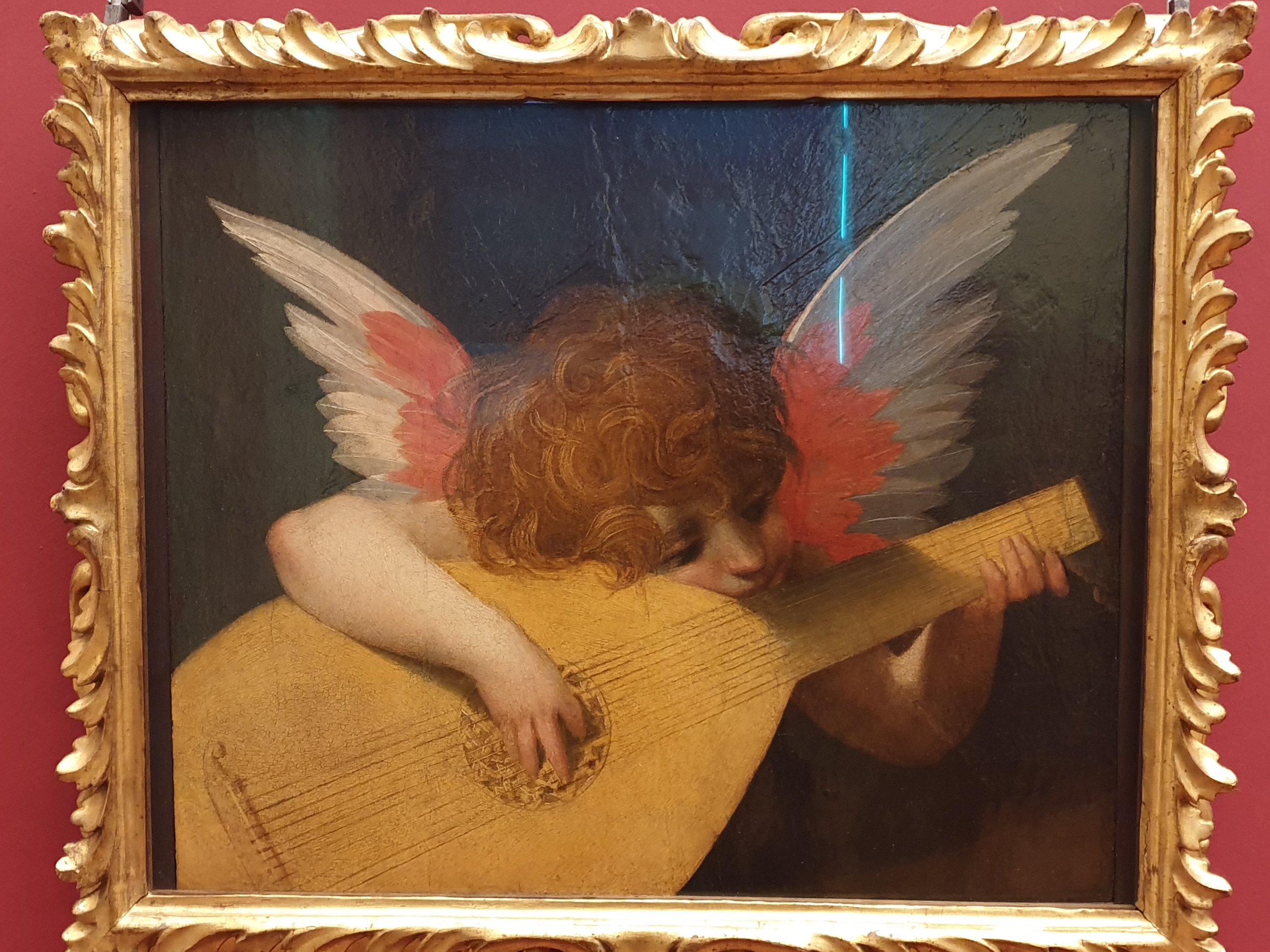
Thoughts as I sit in a garden in Fiesole, overlooking Florence